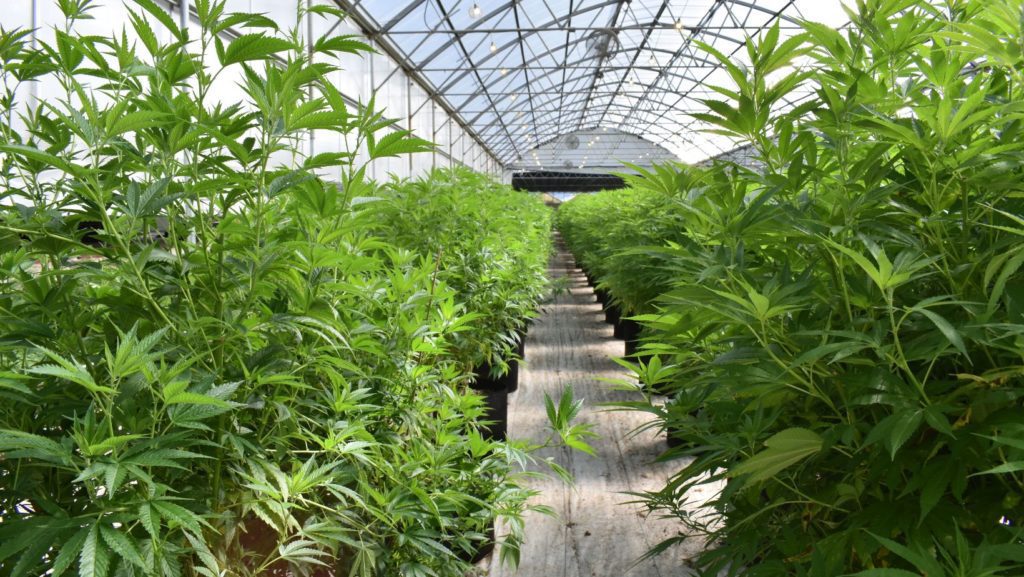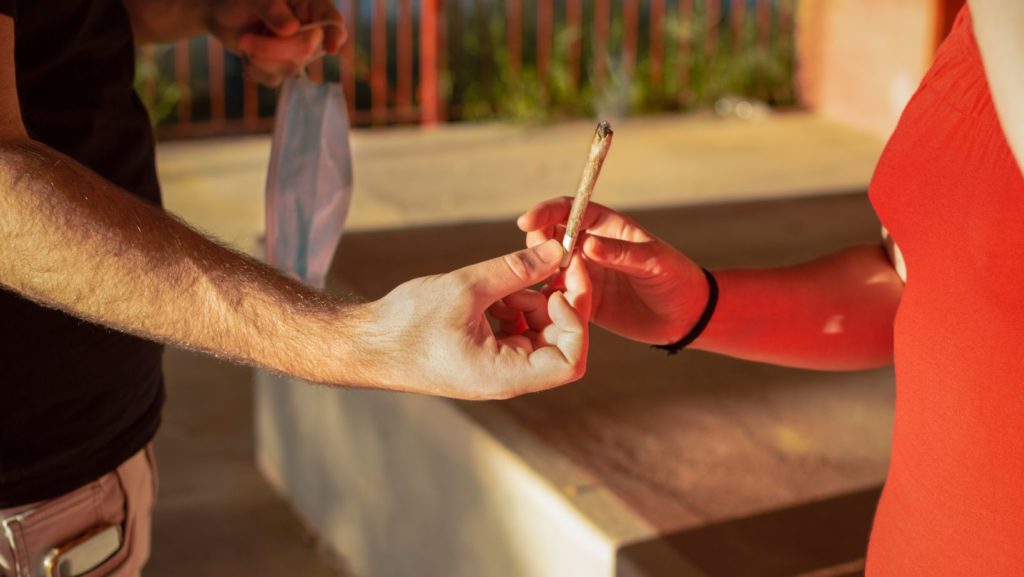The acceptance of CBD in US culture is pretty amazing.
It has been widely embraced by people from all walks of life, and its popularity continues to grow.
One reason for the widespread acceptance of CBD in US culture is the growing body of research on what it can do.
Studies have shown that CBD may be able to really help people who struggle with anxiety, pain, and inflammation.
In addition, it may also have potential benefits for those dealing with more serious conditions such as epilepsy and multiple sclerosis.
CBD has indeed become increasingly popular in the wellness industry.

Let’s learn about how the changing world of these powerful plants.
Here’s some questions we’ll answer in this post:
- Has cannabis been used for thousands of years?
- When did cannabis become legal?
- When did people start using CBD?
- Why did CBD become popular?
- What is the public opinion of marijuana over the years?
- What is the current trend in marijuana use?
Let’s get started.
Has cannabis been used for thousands of years?
Cannabis, a plant known by many names and used in various forms, has been an integral part of human civilization for thousands of years.
Its history is as rich and varied as the cultures that have embraced it.
From its medicinal use in ancient Ayurvedic practices to its role in modern medical therapies, cannabis continues to influence societies around the world.

Early Cannabis Use
One of the earliest documented uses of cannabis dates back to 2800 BC in ancient China, where it was included in the pharmacopeia of Emperor Shen Nung, often regarded as the father of Chinese medicine.
The plant was acknowledged for its medicinal properties and was used in treatments for various health conditions.
In India, references to cannabis, known as ‘Vijaya’, can be found in ancient Ayurvedic texts.
It was used to help relieve symptoms such as pain, nausea, and anxiety, and to stimulate appetite.
This shows that even then, the medicinal potential of cannabis was well understood.
But cannabis wasn’t just limited to the Eastern world.
Evidence of marijuana use was discovered in a 2500-year-old cemetery in western Chin, indicating its widespread use across Asia.
Cannabis also played a part in the culinary world; it was used in food and drink as early as 1000 BC by Hindus in ancient India.
Middle Ages

In the Middle Ages, cannabis found popularity in the Arabic world as a recreational drug, largely because the Muslim religion forbids wine.
Its use was not just recreational but also spiritual; many cultures used cannabis in their religious and spiritual ceremonies.
The term “cannabis” is believed to have originated from the ancient Assyrians, who called it ‘qunubu’, meaning “way to produce smoke.”
This highlights another primary use of the plant – smoking, which has remained a common method of consumption throughout the ages.
Fast Forward to Today
The reputation of cannabis continues to evolve.
While cannabis was once stigmatized and considered illegal, but now its potential wellness benefits are recognized.
Numerous studies have highlighted its efficacy in treating conditions such as chronic pain, epilepsy, and multiple sclerosis, leading to widespread changes in laws and attitudes towards its use.
The history of cannabis is is evidence that it holds significance in human society.
Its journey from ancient medicinal herb to a subject of modern scientific research shows its ability to be used for many different things.
As we continue to explore the potential of this ancient plant, one thing is clear: cannabis has been, and will likely continue to be, an important part of our global culture and the continued journey of health.

When did cannabis become legal?
The history of cannabis legalization is a fascinating tale, marked by growing scientific understanding and legal landscapes.
It’s a story that begins with prohibition but gradually moves towards acceptance and legalization in various parts of the world.
Cannabis was officially outlawed for any use, including medical, with the passage of the 1970 Controlled Substances Act (CSA) in the United States.
This marked a period of strict control over the substance, which showed the largely negative attitude towards its use at the time.
Shifting Attitudes
As scientific research started uncovering potential health benefits of cannabis, attitudes began to shift.
The first significant breakthrough came in 1996 when California became the first state in the country to legalize medical marijuana.
This marked a turning point in the journey of cannabis, opening the door for its acceptance as a therapeutic substance.
The momentum continued to build over the next two decades.
By 2021, numerous states had followed California’s lead, legalizing cannabis for either medical or recreational use.
In late June of 2021, Connecticut legalized the recreational use of cannabis with the passage of SB 1201, further emphasizing the changing landscape.

Growing Acceptance
Despite the federal government’s initial regulation of marijuana in 1937 with the Marijuana Tax Act, state-level legalization has been the driving force behind the growing acceptance of cannabis.
As of May 2023, the non-medical use of cannabis is legalized in 23 states (plus Guam, the Northern Mariana Islands, the U.S. Virgin Islands, and the District of Columbia), and decriminalized in 8 states.
But the journey of cannabis legalization isn’t confined to the United States.
Globally, we’re witnessing a broader trend towards the acceptance of cannabis.
Many countries are recognizing the potential benefits of cannabis, both medicinal and economic, leading to changes in their drug policies.
The journey towards cannabis legalization is an ongoing process, influenced by societal attitudes, scientific research, and policy decisions.
While there are still many hurdles to overcome, the trend towards legalization indicates a future where cannabis could become a widely accepted part of our society.
When did people start using CBD?
The use of CBD dates back thousands of years, with a history as rich and varied as the plant from which it is derived.
Here we will take a closer look at when people started using CBD and its journey through the ages.
CBD Beginnings
The first recorded use of the cannabis plant, from which CBD is extracted, dates back to 2737 BC in ancient China.
Emperor Cheng Neng used cannabis-infused tea to treat health conditions such as malaria, rheumatism, and gout.
However, it wasn’t until much later that CBD was recognized as a distinct compound with potential therapeutic benefits.
Isolating CBD
CBD was first isolated from marijuana in 1940 by Roger Adams, an American chemist.

Despite this breakthrough, the structure and composition of CBD remained unknown for some time.
It wasn’t until 1963 that information about the structure of CBD was finally reported, shedding light on its non-psychoactive properties.
Unlike THC (tetrahydrocannabinol), the other primary cannabinoid compound found in cannabis, CBD does not produce the ‘high’ associated with marijuana use.
However, due to its association with the psychoactive properties of marijuana, CBD remained largely neglected and overshadowed by THC for several years.
The turning point came in the late 20th century when scientists began investigating the potential therapeutic benefits of cannabinoids.
Groundbreaking Research
One of the most significant moments in the history of CBD came in the 1970s, when Brazilian scientist Dr. Antonio Zuardi started researching its anti-anxiety effects.
His work laid the foundation for many of the benefits of CBD that we recognize today, including its possible ability to relieve symptoms of anxiety, epilepsy, and multiple sclerosis.
Today
Today, CBD is recognized for its therapeutic potential and is legal and a popular market in many parts of the world.
The 2018 Farm Bill in the United States legalized the production of hemp, the plant from which CBD is most commonly extracted, paving the way for CBD to become widely available.
The journey of CBD from an overlooked compound to a widely known therapeutic substance shows the growing understanding of cannabis and its potential.

As research continues, we can only expect our knowledge and appreciation of CBD and its benefits to grow.
Why did CBD become popular?
There are several reasons why CBD has become a hot topic in wellness circles and beyond.
Potential Health Benefits:
Studies suggest that it can help with conditions such as anxiety, chronic pain, and insomnia.
It’s also being researched for its effects on more severe conditions like epilepsy and multiple sclerosis.
Non-psychoactive Nature:
Unlike THC (tetrahydrocannabinol), the other main compound in cannabis, CBD doesn’t produce a ‘high’ or any psychoactive effects.
This makes it an attractive option for those looking for relief from various health conditions without the mind-altering effects of marijuana or certain pharmaceutical drugs.
Legalization and Accessibility:
With the passing of the 2018 Farm Bill in the United States, hemp-derived CBD became legal at the federal level.
This has significantly increased its accessibility and helped to boost its popularity.
Growing Acceptance:
As societal attitudes toward cannabis change, more people are open to trying CBD products.
The stigma associated with cannabis is decreasing, leading to greater acceptance of CBD as a legitimate natural treatment option.
Public Endorsements:
Celebrities and influencers have played a significant role in promoting CBD, further increasing its popularity.

From professional athletes using CBD gummies for recovery to actors praising its calming effects, these endorsements have contributed to CBD’s mainstream appeal.
The growing popularity of CBD can be attributed to its potential health benefits, non-psychoactive nature, ease of use, and increasing societal acceptance and legality.
As research into CBD continues, it’s likely that its popularity will continue to rise.
What is the public opinion of marijuana over the years?
Public opinion about marijuana has seen a significant shift over the years.
In the United States, recent data indicates an overwhelming share of adults (88%) believe that marijuana should be legal for medical and recreational use by adults (59%) or that it should be legal for medical use only (30%).
Only about one-in-ten (10%) say marijuana use should not be legal.
History
Historically, support for the legalization of marijuana was much lower.
For instance, in 1969, only 12% of Americans supported the legalization of marijuana.
However, this percentage gradually increased over the years, reaching 68% in 2020.
Why?
Several factors have contributed to this change in public opinion.
These include increased awareness of the potential medical benefits of marijuana, reduced stigma associated with its use, and changes in laws and regulations that reflect more liberal attitudes towards marijuana.
Public opinion about marijuana has changed a great deal in recent times.
The growing acceptance and support for its use, both for medical and recreational purposes, reflects broader shifts in societal attitudes towards the substance.
What is the current trend in marijuana use?
The landscape of marijuana use is changing rapidly.
As societal attitudes shift and legal restrictions loosen, we are witnessing a significant increase in marijuana use across different demographics.

According to recent studies, the prevalence of frequent cannabis use (daily or near-daily) increased from 1.9% in 2002 to 3.5% in 2014 among adults aged 18 and above.
Furthermore, in 2019, approximately 18% of Americans reported using marijuana at least once.
This indicates a clear upward trend in marijuana use over the years.
A major factor driving this trend is the growing societal acceptance of marijuana.
A 2022 Pew Research Center survey found that a whopping 88% of US adults support marijuana legalization for either medical or recreational use.
This shift in public sentiment has played a crucial role in increasing marijuana use.
The trend toward legalization has also been accompanied by increased public education about the health risks associated with marijuana use.
Despite this, certain groups have seen a significant increase in use. For instance, a survey found that 43% of young adults reported using cannabis within the last 12 months, up from 34% in 2016.
While these statistics indicate a growing acceptance and usage of marijuana, it’s important to consider the potential downsides as well.
A study found that marijuana abuse among teens has increased 245% over 20 years, highlighting the need for continued education and abuse prevention efforts.
The pandemic also influenced marijuana use trends.
During the pandemic, cases where children under 10 visited emergency departments due to cannabis consumption rose significantly, with weekly cannabis-related ED visits rising as well.
The current trend in marijuana use is a complex phenomenon influenced by societal attitudes, legislative changes, and increased awareness of both the benefits and risks associated with the substance.

As we navigate this evolving landscape, understanding these trends can provide valuable insights for policymakers, healthcare providers, and individuals alike.
Transformation
CBD, cannabis, and marijuana have gone from being seen as “only for the druggies” to now being recognized as having health benefits.
This shows how understanding and attitudes in society are changing over time.

As research continues to uncover their potential benefits and laws adapt to these new insights, the reputation of these substances has undergone a big transformation.
This shift in perception shows the power of information, advocacy, and open-mindedness in challenging long-held beliefs and paving the way for progress.
As we move forward, it will be fascinating to see how the narrative around CBD, cannabis, and marijuana continues to evolve.


